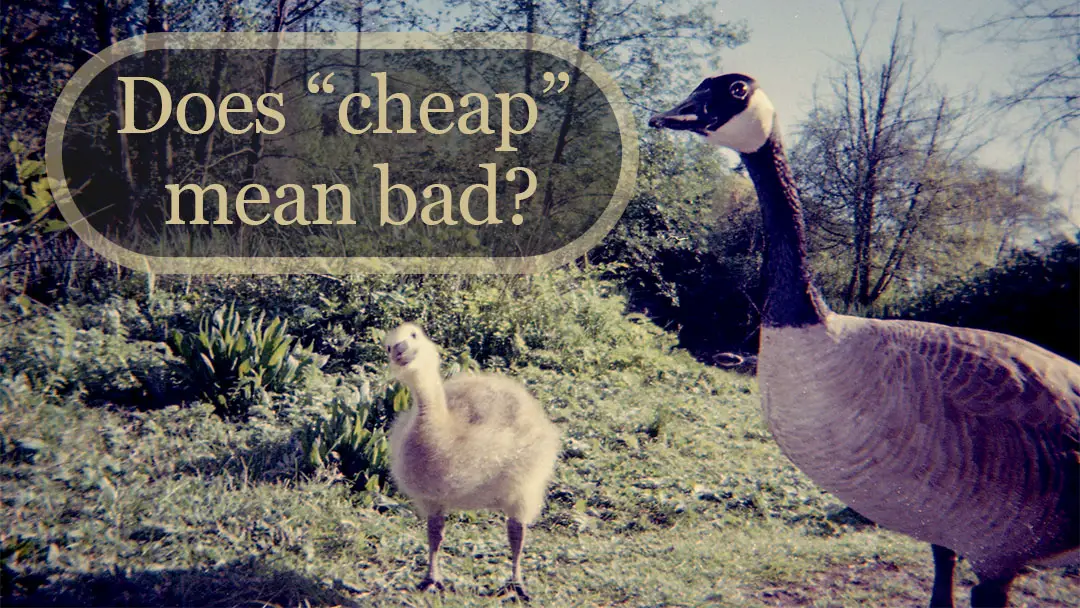If you’re new to film photography, one of the first things you’ll notice is just how expensive the whole industry has become. Back around 2010 when film photography was almost completely forgotten about, it was possible to get a roll of Kodak Portra 400 for less than $10 USD.
But over the last three years, film prices are increasing across the board. So if you want to save money, the first place many photographers look at is buying cheaper film stocks like Kodak Gold, ProImage, Silberria, Kentmere or Fomo films. But is cheap film worth it?
Cheap film stocks still produce incredible results. While they are not as flexible or grainless as the professional films, cheap emulsions still produce sharp images with good color rendition. In many cases, the cheaper stocks create ‘the film look’ that brings many photographers to this medium in the first place.
There is no reason to look down on the cheaper films. Overall, they may be grainier and retain a bit less shadow detail, but they are still good, usable films that produce high-quality images.
Why many photographers prefer budget film stocks
Film is a romantic medium. We don’t shoot film to make our jobs easier or because film creates perfect image quality. We shoot film because the imperfections and the grains look and feel better, and because shooting film feels like craftsmanship.
Professional film stocks were created to be the highest-quality emulsions made for working photographers. Fuji famously worked to make the most true-to-life color film stocks (RIP, Fuji Pro400H), while Portra was beloved by wedding and portrait photographers in the 90s because of its versatility.
Today, these film stocks are still the natural choices for working professional photographer, but for the everyday shooter, and even portrait and wedding photographers, there is still reason to use the budget emulsions. Many photographers even prefer budget film stocks over the professional versions because of the look they can create.
For example, shooting Kentmere or Foma 400 will produce a grainier image than Ilford Delta 400 — but most photographers would be shooting digital mediums if they didn’t want to see grains.
And when compared to Portra, Ultramax does create a warmer image with golden skin tones and blues/greens in the shadows — a look that many photographers are trying to emulate in the first place.
Take for example, the look that you get when shooting a reusable disposable camera (like the incredible Ilford Sprite 35-II). Those cameras don’t capture sharp images, but the lo-fi feeling they create when paired with Ultramax cannot be emulated with a professional film.
The benefit of shooting Portra is that you can choose to make the image look that way, or any way that you want. But there is a certain point where Ultramax just does it better.
What is the difference between cheap and professional film stocks?
There is a reason budget film is cheaper. Ilford and Kodak aren’t just going to release a film for half the cost of their mainstays without a tangible difference.
According to Ilford, the Kentmere lineup contains approximately 30% less silver than their more popular HP5+ and FP4+.
That means even though Kentmere has a 100 and 400 speed film, that the Kentmere lineup will be grainier, contrastier, and retain less shadow detail. (See this article to learn how grain works and why this matters).
Kodak doesn’t publish as much data about why their budget films are cheaper. But it is likely for similar reasons.
For example, when comparing Kodak Gold to Portra 400, there is a noticeable increase in film grain.
But budget color film also has another trick. The film has less sensitivity across the color spectrum than the professional lineup. That means the film will exhibit some color and saturation changes when shot next to Pro400H or Portra.

How to create the best results with budget film
For best results, aim to overexpose the film by 1/3rd or half of a stop. That means if you’re shooting at ISO 400 on Kentmere film, try to expose at ISO 320.
Overexposure will give the film a better chance of capturing shadow details, and will make for a flatter negative capable of being edited.
But if your goal is to create a contrasty image, then shoot normal, or even push it in post processing. At the end of the day, these films are just as good as the pro emulsions, and you should expect no less from them.
Kodak, Fuji, and Ilford aren’t putting bad film onto the market. And while you can technically take higher-quality photos by being precious about each exposure, you’ll create better images by being present in the moment.
Who are budget film stocks for?
Budget film stocks are for anyone who wants to shoot film consistently. If you’re shooting for yourself, for art, on the street, or anywhere where it’s more important to have film than to not have film, then budget stocks are the way to go.
But budget stocks also have a place in professional photography. When you need grain, or when the warm Kodak Ultramax glow is what you’re after, then why shoot Portra?
When you need flexibility, overexpose these films for the best chance at creating a flatter negative where you can control the contrast.
There is a time and place to shoot Portra, Ektachrome, Cinestill 800t, or Ektar. But that’s not necessarily every day — even if you have the budget for it and multiple Leicas.
Final thoughts
Getting out shooting will help you learn more about film photography than reading any blog on the Internet (this one included). And that’s exactly what budget films are designed for.
Of course, they will look better when you shoot them in the proper conditions. And learning those conditions will help when shooting any other film stock.
I’ve loved shooting Kentmere and budget Kodak films. Heaven was when you could get a 3-pack of Kodak Gold or Ultramax on B&H for $12. And it’s still affordable today, though I am excited for some more competition in this space to bring prices down.
What’s your favorite budget film? And have you had different experiences than me? Let me know down in the comments below!

By Daren
Daren is a journalist and wedding photographer based in Vancouver, B.C. He’s been taking personal and professional photos on film since 2017 and began developing and printing his own photos after wanting more control than what local labs could offer. Discover his newest publications at Soft Grain Books, or check out the print shop.








Why use ‘budget’ films when you can bulk load the good stuff?
For everyday use ,bulk load.
https://www.camera-traders.com/collections/black-white-film/products/ilford-hp5?variant=35315883507866
For experimentation go singular.
TB
This is a really good point, and it’s a good way to stay environmentally friendly. I’ve wanted to try out bulk loading for a while now — but I always thought that it didn’t save that much money. Just went and did the math again, and it seems like each 100ft roll makes about 18x 36 exposure rolls. Is that your experience as well?
I’m bulk loading Foma 200, and the math seems about right. A used bulk loader can be bought for relatively little (mine was $15, purchased this year), so not even that eliminates the savings.
How much does a bulk roll of Foma 200 cost you? When I go back to 35mm, this will definitely be something I’ll try. I’d love to get my hands on a bulk roll of Delta 3200 if it’s made.